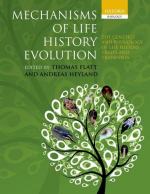|
This section contains 1,050 words (approx. 4 pages at 300 words per page) |

|
Modern anatomical science, the rebirth of the empirical anatomy that had been unknown in the West since Aristotle (384-322 B.C.), is usually said to have begun in 1543 with the publication of De humani corporis fabrica (On the Structure of the Human Body) by Andreas Vesalius (1514-1564). This massive work, systematically arranged and meticulously illustrated, relied upon the results of actual human dissections performed by Vesalius himself, his colleagues, and his students to discover and demonstrate intricate facts. Vesalius dared to oppose Galen (ca. 130-ca. 200), whose authority had been sacred for nearly fourteen centuries. Since good physiological science must be based upon solid anatomical knowledge, modern physiology can also be said to have begun in 1543.
In the wake of Vesalius came a surge of great anatomists, such as...
|
This section contains 1,050 words (approx. 4 pages at 300 words per page) |

|


